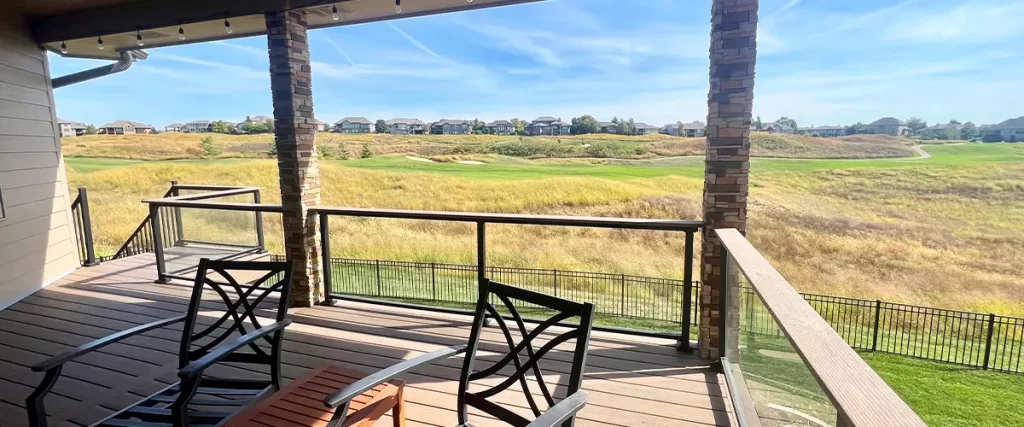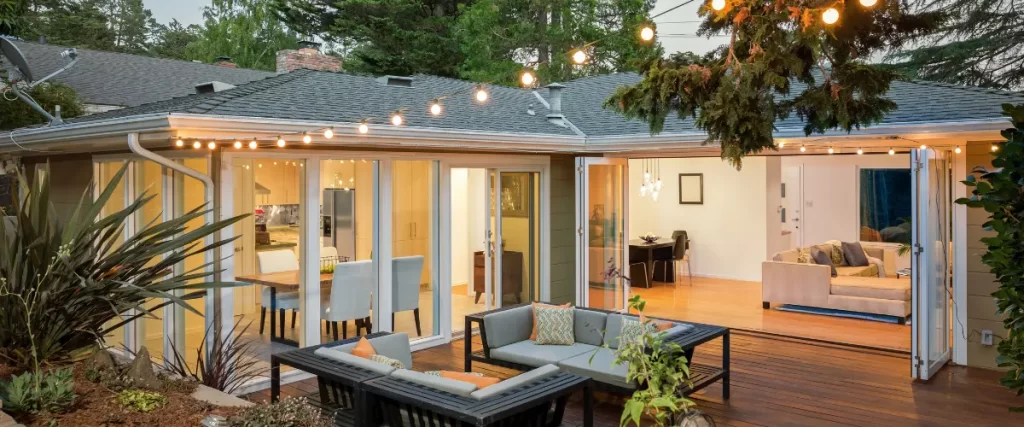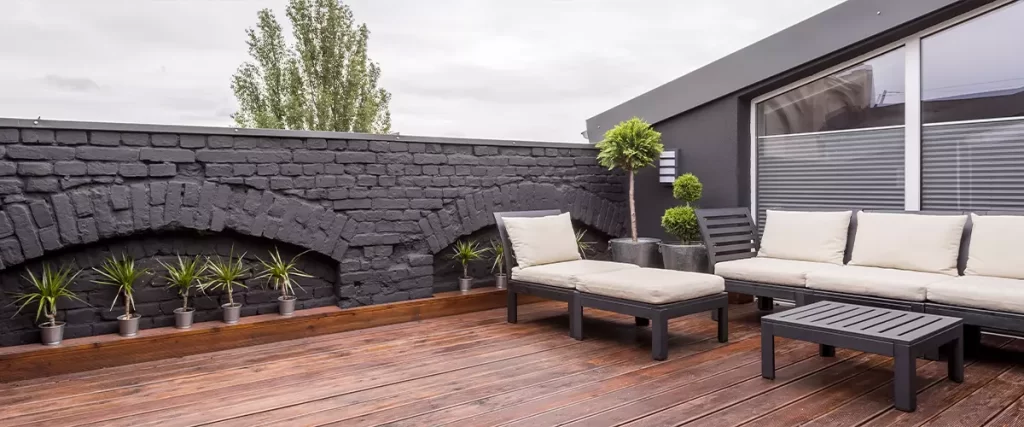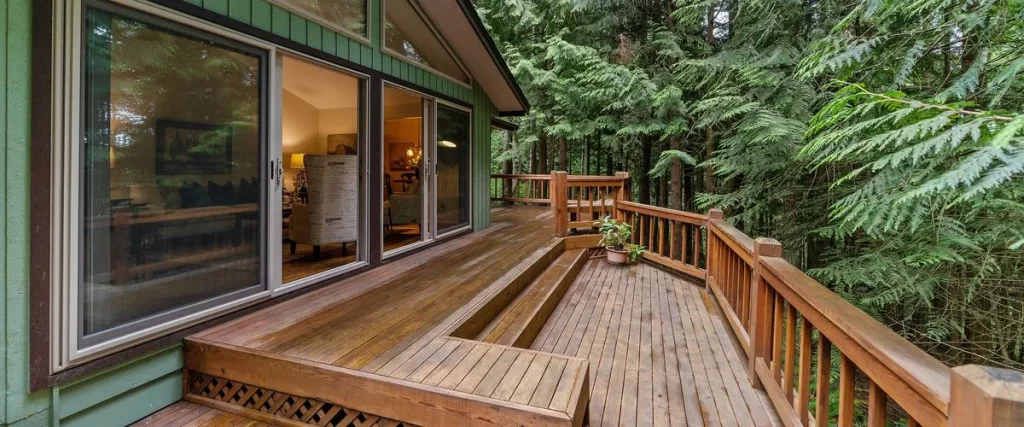Thinking about adding a deck to your historic home in Council Bluffs? You’re not alone, and you’re definitely not crazy for wanting a beautiful outdoor space to enjoy.
But before you grab your tools or hire a crew, there’s something important you need to know: Council Bluffs deck historic district preservation rules are a different animal compared to regular zoning laws. And if you don’t follow them? You could face delays, fines, or even have to tear down your brand-new deck. No one wants that.
So let’s break it what the rules are, why they exist, and how you can still design and build a deck that’s beautiful, functional, and 100% compliant with local preservation guidelines.

What Are Landmark Preservation Districts?
First things first: landmark or historic preservation districts are special areas where homes and buildings have historic or architectural significance. That might mean they’re tied to local history, represent a certain architectural style, or just contribute to the overall charm of a neighborhood.
In places like Council Bluffs, these districts are protected by local ordinances to maintain their look and feel. That means any changes to a home’s exterior, including decks, have to follow specific design rules.
Why Deck Rules Exist in Historic Districts
You might be wondering: Why do I need special permission to build a deck? It’s my yard!
Totally valid question. But here’s the deal: when a neighborhood is part of a historic preservation district, every visible change impacts the overall aesthetic. Adding something like a modern composite deck on a Victorian-era home can throw off the architectural harmony.
The goal of these rules isn’t to stop you from improving your home; it’s to make sure those improvements respect the area’s character.

Council Bluffs Deck Historic District Rules: What You Need to Know
Here’s where it gets specific. While exact guidelines may vary slightly depending on the neighborhood or governing board, here are the most common deck-related rules you’ll run into in Council Bluffs preservation areas:
1. Location Matters
Decks are generally expected to be located at the rear of the house. Side and front yard decks are typically discouraged (and often outright prohibited) because they can significantly alter the public-facing view of the home.
2. Materials Must Match or Complement the Original Structure
Forget about using ultra-modern materials like steel beams or neon-colored composite planks. Most preservation commissions will want materials that either match or complement the home’s original materials. That might mean real wood, painted in a historically appropriate color.
3. Design Should Reflect Historic Elements
Your deck should echo the style of the home. That means things like:
- Traditional railing patterns
- Similar trim or baluster styles
- Proper scale (nothing too big or dominating)
4. Height Restrictions and Visibility Concerns
If your deck is too tall or built on a slope, it might be visible from the street, and that’s usually a no-go. You’ll likely need to provide elevation drawings showing visibility from various angles.
5. Permits & Design Review Are Required
Before you build, you’ll need to submit plans to your local Historic Preservation Commission or equivalent authority. They’ll review your deck design to ensure it aligns with district rules.
Pro Tip: Don’t skip this step. Getting retroactive approval is extremely difficult and sometimes impossible.
Deck Design Best Practices for Historic Homes
Designing a deck in a historic district doesn’t mean sacrificing beauty or function. In fact, some of the most gorgeous decks we’ve seen were built in strict preservation areas.
Here’s how to get the best of both worlds:
- Keep it low-profile: Lower decks are less visible and less likely to conflict with historical aesthetics.
- Use natural tones: Earthy colors and stained wood blend better with historic surroundings.
- Mind the railing: Stick to traditional styles like square wood balusters or wrought iron.
- Coordinate with the house: If your home has white trim and blue siding, mimic that in your deck.
Navigating the Approval Process Like a Pro
Let’s be honest, working with the Historic Preservation Commission can sound intimidating. But it doesn’t have to be.
Here’s how to smooth out the process:
- Do your homework: Visit your city’s historic district design guidelines page. (Council Bluffs guidelines can often be found at:
- Sketch your vision: Include basic measurements, railing design, materials, and colors.
- Prepare supporting documents: Photos of your house, your property line, and the surrounding homes can help your case
- Be ready for feedback: The commission might suggest small changes. Don’t take it personally, they’re doing their job.

Best Manufacturers for Historic-Friendly Deck Materials
Choosing the Right Decking Products for Preservation Districts
Not all deck materials are created equal, especially when you’re dealing with historic district standards. The right manufacturer can make or break your project’s compliance.
Top Manufacturers for Historically Appropriate Decking:
- TimberTech
Known for realistic wood textures and history-friendly color palettes. - Fiberon
Offers composite decking with a traditional look, plus eco-friendly manufacturing. - Deckorators
Great for period-appropriate railing systems and balusters. - Culpeper Wood Preservers
Specializes in pressure-treated lumber that fits historical requirements. - AZEK (Vintage Collection)
A high-end PVC product line with refined, authentic finishes ideal for historic settings.
Our Team: Experts in Historic Deck Design
When It Comes to Deck Design in Historic Areas, Experience Matters
Our team has been designing and building decks in landmark districts for years. We’ve worked with countless homeowners, city boards, and historical commissions to deliver decks that are both stunning and compliant.
As with anything important in life, working with the best professionals means fewer headaches, fewer delays, and results that last. We’ll guide you through the design process, help with permit applications, and make sure your deck looks like it was always meant to be part of your home.
Ready to get started? Contact us at [cgv tel] today, and let’s bring your vision to life the right way.

Frequently Asked Questions
Do I need a permit to build a deck in a historic district?
Yes, you’ll need both a regular building permit and approval from the Historic Preservation Commission.
Can I use composite materials?
Sometimes. You’ll need to choose composites that mimic real wood closely and get them approved during the review process.
Can I build my deck in the front yard?
Usually not. Most preservation rules restrict decks to rear or side yards that are not visible from the street.
How long does the approval process take?
Expect the design review process to take 2–6 weeks, depending on your submission quality and review meeting schedules.
Will I have to match my house’s paint or trim colors?
Yes, in most cases. The deck should visually align with your home’s existing color palette and style.
Can I replace an existing deck without approval?
Only if the new deck is identical in design, materials, and dimensions. Any changes require a new review.
Are there height limits for decks in historic areas?
Yes. Decks should remain low to the ground if possible and must meet visibility restrictions from the street.
What happens if I build without approval?
You may face fines and be required to alter or remove the deck entirely. Always get approval first.
Final Thoughts: Play It Smart with Council Bluffs Deck Historic District Rules
Designing a deck in a historic preservation district might feel like walking a tightrope, but trust us, it’s completely doable when you know the rules. If you follow the guidelines and lean on expert help, you’ll end up with an outdoor space that enhances your home without sacrificing your neighborhood’s charm.
If you’re ready to build a deck that respects history and fits your lifestyle, don’t wait. Contact us at (402) 369-5724 and let’s start your deck-building project
